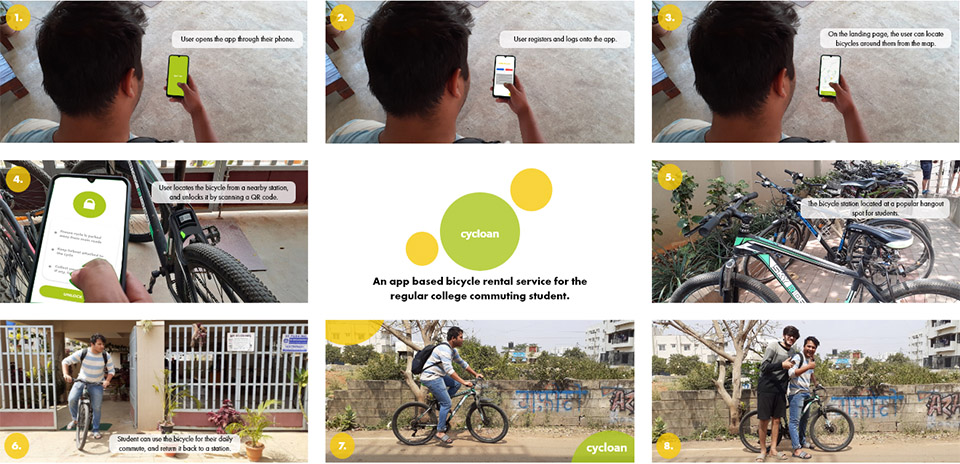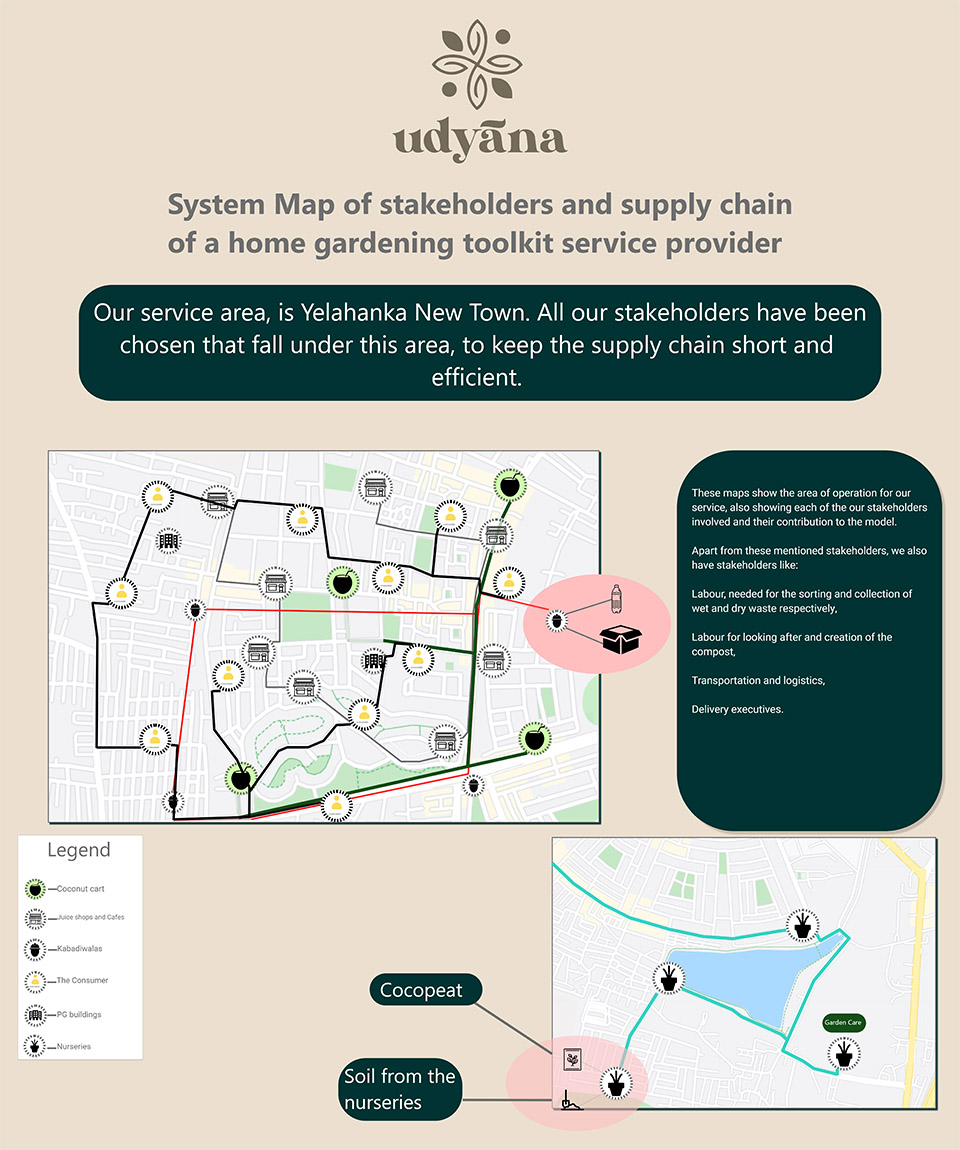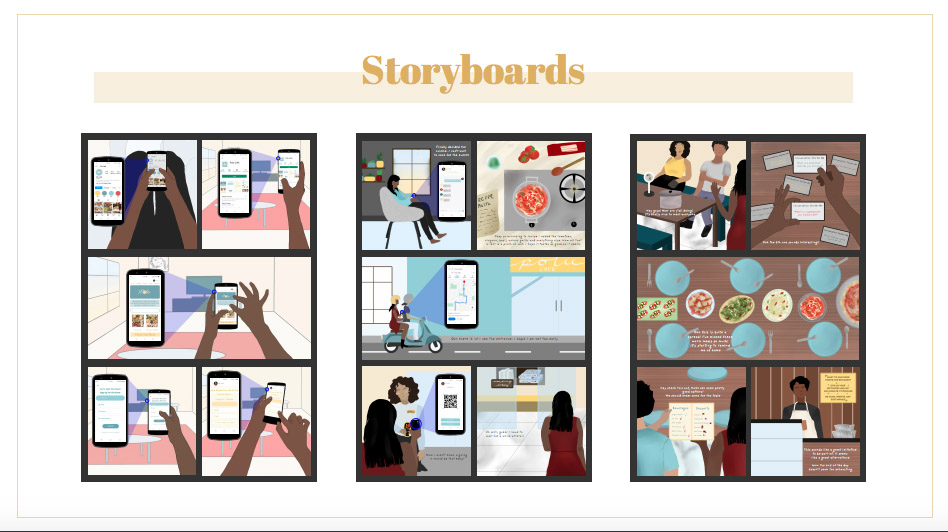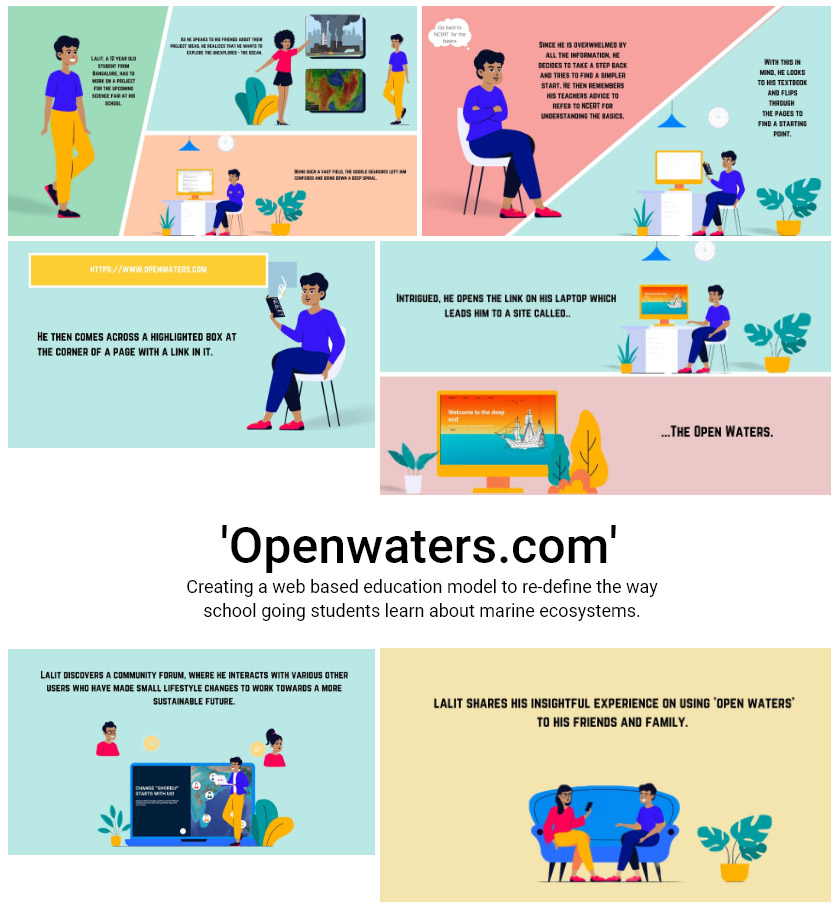“Listening to both sides of a story will convince you that there is more to a story than both sides” - Frank Tyger

App based Bicycle rental service
Vision
All natural and manmade systems are interconnected and interdependent on all existing systems. Keeping this crucial fact in mind, we need to think and envision beyond conventional and known boundaries.
Products as we know them no longer exist as individual and stand alone function performing objects but also as ‘platforms’ that are part of a larger system of interconnected products that aim to facilitate and serve us.
Business Services and System Design is for those who want to learn how to innovate and create sustainable businesses, services and systems for complex challenges facing our world today and in the future.
Innovation in Information and Communication Technology has given rise to multiple businesses, systems and services that offer us options as we go about our everyday lives. From choosing the kinds of transport to get to work, to aggregated security and facilities offered to residents by apps like ‘Mygate’ as well as online retail and banking platforms are examples of choices that consumers have today. However, as we advance into the era of smart ecosystems it is crucial to question the long term impact of the choices we make across socio-economic, cultural, and environmental factors. The challenge thus lies in innovation and problem solving using multi-disciplinary convergent thinking and also ensuring that we are not inadvertently creating new problems for tomorrow.
The role of systems and service designers entails being perceptive participants and facilitators within the systems in order to be able to innovate and design new, business ready services. This is a fundamental shift; one that requires us to be able to look at scenarios from a macro and micro perspective as well as being able to look beyond the obvious for invisible patterns that create new opportunity spaces. It is also important for us to be mindful of the resources and all stakeholders involved.
The course enables designers to create new scenarios for businesses, systems and services, by using service design and research tools and to become sensitive to the broader impact and outcome of these interventions. The course will draw from the disciplines of human-centered design, social and grass-roots business innovation and information technology. The aim is to acquire an integrated learning to nurture holistic approaches necessary in today’s dynamic and interdependent scenarios.

Contextual mapping
Key Values
The course focuses on innovative business, systems and services that are:
Sustainable (economic, social and environmental)
Inclusive and Mindfulness
Course Structure
The curriculum comprises of different ways of learning as follows:
- Foundation introduces students to basic principles and tools of Art, Design and Technology as methods, tools and processes. Read more >>
- Disciplinary Studios are learning spaces where students develop core disciplinary capabilities, while navigating a trans-disciplinary environment
- General Studies is a common and compulsory programme of study that integrates Humanities, Sciences, Maths, business and finance. Development and Policy Studies and also offers Languages (Spanish, French and German) Read more >>
- Interim is an immersive introduction to practice in new and emerging areas of art and design and environmental exposure
- Electives are of three kinds - this program allows students to expand their skills, develop the interests as well as provide opportunities for travel exchange
- Internship/Apprenticeship is compulsory work experience done over the summer-break between the 6th and 7th semester
- Project based learning involves the application and synthesis of capabilities acquired. Two projects, pre-thesis and thesis, is culmination of the 4-year undergraduate program, which allows for demonstration of an integration of values, positions, capabilities and practice. Read more >>
Learning Approach
Observing, absorbing, assimilating and emulating form the core and enduring learnings of the Business Services and Systems course. From this core emerges the ethos of Inclusion, sustainability and frugal design with applications in real life sectorial contexts such as agriculture, health, information technology and others.
Equipped and empowered with these learnings, one begins to make conscious connections between the interdependencies within systems using a variety of design and thinking tools. This constant back and forth navigation between the micro and macro encourages a robust and enduring understanding of businesses systems and services.
Research, Analyze & Synthesize
Conduct research to define and scope a problem. Analyze and synthesize qualitative and quantitative data to derive innovative ideas of business, systems and services.
Envision & Evolve
Address the conflicting needs of the problem and its stakeholders. Apply methods of design thinking to envision and visualize creative systems and services and develop these ideas into well-defined solution concepts.
Realize
Make the concepts of systems and services real by applying design and business thinking methods.
The learning engagement is divided into two phases. The first phase focuses on understanding and appreciating design-thinking theories, methodologies and advanced skills through modes of mentored design studios, workshops and charrettes. The second phase focuses on applying the understanding to drive a reflective inquiry into complex real-world problems under the mentorship of faculty in one or more labs or centers mentioned above.

Story boarding and prototyping of a Business Model
Capability Sets
Upon successful completion of this course graduates will have developed the following capabilities:
Research and analyze
- To observe without bias, and to simulate scenarios in order to extract information
- To be able to position oneself in diverse contexts in order to draw valuable insights
- To have the ability to position oneself in a larger global context
Synthesize and Envision
- Ability to identify patterns within systems and services both apparent and beyond the obvious
- Capability to make connections between seemingly unconnected components
Evolve and Reflect:
- Have the ability to experiment, make, and be open to critical feedback in order to generate insights and opportunity areas to push boundaries.
- Have the capability to collaborate and also be open to critical feedback from all stakeholders
Opportunities
The above mentioned capability sets could lead to opportunities such as:
- Employment in Information Technology industry which focus on integrating application and infrastructure
- Employment in design studios, R&D, product development teams in small and large companies
- Employment in start-ups, small and medium enterprises, NGOs & social enterprises
- Employment in infrastructure development and planning agencies
- With a strong will and a belief in your ideas you can become a practitioner, entrepreneur or a design consultant by becoming part of larger teams working towards emerging future scenarios in domains such as retail, infrastructure, healthcare, education and many more
- Higher studies options: Masters in service design, environmental and sustainability studies as well as design management.

Customer Journey Map
People
Enquiries

Disciplinary Intersections
The course is informed by the following learning disciplines:
Information Technology (particularly Web and Systems of Information)
Interaction Design
Service Design
Product Design
Furniture Design
Visual Communication Design
Strategic Communication
Business Design Entrepreneurship
Research and Collaboration
FAQs
Business services and systems design is a fast emerging area of design. In a world that is getting more and more interdependent and connected, influenced by technologies, environment, geographies and so on, systems and service design are becoming central to most organizations. Most companies and start-ups, NGOs, production units today not just sell products but also service solutions. It is in this ecosystem that a BSSD graduate will engage and contribute in.
Career opportunities within the traditional design industry include design consultancy, ethnographic research, service design, social innovation, retail design, brand design, business model innovation, art direction and positions as trend analysts, corporate coordinator and project managers.
Srishti Manipal does not offer placement in the way that other Institutes do. We have other means of connecting students to Industry. Students have to do a mandatory Internship at the end of the 3rd year. At the end of the 4th year the students work is displayed in a graduate showcase which is open to public as well as industry. This platform has served as a good medium for students to interact with the larger world as well as prospective employers.
We encourage students to learn how to use basic design software that will help them envision, analyse and present their work better. Adobe creative suite, 3D modelling software’s, collaborative white boarding as well as MS office are commonly used.
The course will be a mixture of case studies, working in real world contexts and studio work. Traditionally system design was part industrial design, but in today's more interconnected world, system and service design has assumed a more important and independent role. System designers understand the larger contexts which includes the service and business components and often prepare the design brief that is shared with others in the design team such as communication, space and industrial designers.
The course will be a mixture of case studies, working in real world contexts and studio work. Traditionally system design was part industrial design, but in today's more interconnected world, system and service design has assumed a more important and independent role. System designers understand the larger contexts which includes the service and business components and often prepare the design brief that is shared with others in the design team such as communication, space and industrial designers.
A Business Service and System Designer would design the blueprint and ecosystem of the service in which the product ‘touchpoints’ (system components) rest. The Industrial Arts and Practices designer on the other hand would focus more on designing, giving form and detailing the ‘touch points.’ Both need to work collaboratively.
Yes, you can apply for an MBA. You can also pursue a Master’s degree in emerging subjects like Communication Design, Ecological Reliance, Design Management, Global Innovation Design Social Design and Sustainable Development programmes.
We facilitate students in creating their portfolios and applying for internships across India.
Our courses are listed in the prospectus. We focus on issues like circular economy, sustainability and social inclusivity. We situate all our courses in domains and contexts such as healthcare, transportation, agriculture, retail, education, and others that impact the world today and in future scenarios.
Not at all. We always scaffold our theories with real-life contexts and scenarios in order for the student to apply his/her learning immediately. We strongly believe that the world around us is our classroom. We encourage our students to go out and work on real-world issues.
We train our students to think creatively and embrace new situations and contexts and this is highly valued by mainstream Industry today. Learning to learn is an important part of our pedagogy and students are able to adapt easily to whichever Industry they work in. The industrial training and client based real life contexts give the students the necessary exposure to industry.
Remuneration is largely based on the sector that the young designer wants to work in. For example, starting salaries in craft based NGOs are typically less than what a Design studio may offer. A lot depends on the student’s portfolio too, and we mentor students to create portfolios that reflect who they are.
Many of our students have pursued masters programs after a year or two of industry experience. There are Masters programs offered at Srishti Institute of Art, Design and Technology and other art and design schools around the world and you are eligible to apply for any of them.
No, all students go through the admissions process and are selected by merit only.
User Experience Design is focussed on one point of interaction (touch point) of the customer, typically a website or a mobile app. Customer Experience (CX) Design looks at tackling multiple touch points in a customer’s journey in a service. Service design considers everything that is being offered to a customer and does it from the perspectives of both the service providers and the service users.
We apply principles of design thinking to all our offerings, be it business, system or services.
All the three, Services, Systems and Business are closely interrelated. Business like in most services is the driver and the system is the structure/ framework that keeps it all together.
There are new and fast emerging contexts in the real world and we encourage our students to explore these in the framework of their courses. Students are allowed to navigate among other courses offered by the same school such as Industrial Arts and Design Practices, Human Centered Design, Visual Communication and Strategic Branding, Creative Education and Creative, Public Space Design and Applied Computation.




